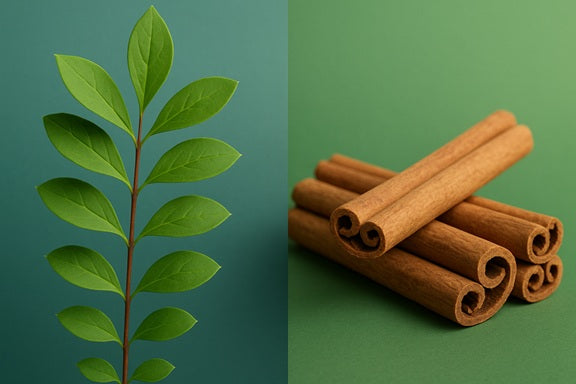By the aSquared Nutrition Team
In the pristine heights of the Himalayan mountains, where ancient glaciers meet towering peaks, a remarkable substance has been quietly forming for millions of years. Shilajit, a dark, resinous material that oozes from rock crevices during the warmer months, has captured the attention of both traditional healers and modern wellness enthusiasts. This mysterious "conqueror of mountains," as its Sanskrit name suggests, represents one of nature's most complex mineral-rich compounds, bridging the gap between ancient Ayurvedic wisdom and contemporary nutritional science.
The Ancient Origins of a Mountain Treasure
Shilajit's story begins not in human history, but in the geological epochs that shaped our planet. This sticky, blackish-brown substance is the result of a fascinating natural process that spans millions of years. During the late Triassic period, approximately 200 million years ago, massive geological activity trapped ancient plant life and organic matter within rock formations [1]. Over countless millennia, the decomposition of this organic material, combined with the unique pressure and temperature conditions found at extreme altitudes, created what we now know as shilajit.
The formation process is as remarkable as it is lengthy. High in the mountains, between 10,000 and 16,000 feet above sea level, layers of plant material became compressed within rock formations [2]. Microorganisms, including bacteria and fungi, slowly broke down this organic matter, creating a complex mixture of humic substances, minerals, and bioactive compounds. The result is a substance that contains the concentrated essence of ancient forests, preserved and transformed by geological forces.
While the Himalayas remain the most famous source of shilajit, this precious substance has been discovered in other high-altitude regions around the world. The Altai Mountains of Russia, the peaks of Afghanistan and Tibet, and even the Andes of northern Chile have yielded their own varieties of this mineral-rich resin [3]. Each region produces shilajit with slightly different compositions, reflecting the unique geological and botanical history of their respective environments.
A Complex Composition of Nature's Pharmacy
What makes shilajit truly extraordinary is its incredibly complex composition. Far from being a simple mineral supplement, shilajit contains over 85 trace minerals and a sophisticated array of organic compounds [4]. The exact composition varies depending on the geographical source and environmental conditions, but certain key components remain consistent across different varieties.
The most significant components of shilajit are humic substances, which account for 60 to 80 percent of the total compound [5]. These include fulvic acid, humic acid, and humins, each with distinct molecular weights and solubility properties. Fulvic acid, with its low molecular weight of around 2 kDa, is particularly noteworthy because it is easily absorbed in the intestinal tract and is believed to be responsible for many of shilajit's therapeutic properties [6].
Beyond humic substances, shilajit contains an impressive array of bioactive compounds. These include ellagic acid, various fatty acids, resins, albumins, triterpenes, sterols, aromatic carboxylic acids, amino acids, polyphenols, and phenolic lipids [7]. Recent advanced chromatographic analysis has also revealed the presence of specific molecular species of polysaccharides and lignins, adding to the complexity of this natural compound.
The mineral content of shilajit is equally impressive, containing essential elements such as calcium, iron, magnesium, zinc, and selenium. Some varieties contain more than 20 different elements, making shilajit one of the most mineral-dense natural substances known to science [8]. This rich mineral profile, combined with the organic compounds, creates a synergistic effect that may explain shilajit's wide range of potential health benefits.
Traditional Wisdom Meets Modern Science
For over 3,000 years, Ayurvedic practitioners have revered shilajit as one of the most powerful rasayanas, or rejuvenative substances, in their pharmacopeia. Ancient texts describe shilajit as a substance that improves the quality of plasma and, consequently, all tissues in the body [9]. Traditional uses included treating a wide range of conditions, from kidney stones and edema to hemorrhoids and anorexia, while also serving as an internal antiseptic and general health tonic.
The Sanskrit meaning of shilajit, "conqueror of mountains and destroyer of weakness," reflects the high regard ancient healers held for this substance. They believed it could enhance physical strength, improve longevity, and provide protection against various diseases. These traditional claims have sparked considerable interest among modern researchers, leading to numerous scientific investigations into shilajit's potential health benefits.
Contemporary research has begun to validate some of these ancient claims, though much work remains to be done. Studies have suggested that shilajit may have significant antioxidant properties, with some varieties showing ORAC (Oxygen Radical Absorbance Capacity) values between 50 and 500 Trolox units per gram, substantially higher than well-known antioxidant foods like blueberries [10].
Potential Health Benefits: What the Research Shows
Modern scientific investigation has revealed several promising areas where shilajit may offer health benefits, though researchers emphasize that more comprehensive studies are needed to fully understand its therapeutic potential.
Cognitive Health and Neuroprotection: Perhaps the most exciting area of shilajit research involves its potential effects on brain health. A 2023 laboratory study found that shilajit from the Chilean Andes may help slow the progression of Alzheimer's disease by breaking down amyloid plaques that damage brain cells [11]. The fulvic acid in shilajit appears to prevent the formation of new amyloid deposits while potentially supporting overall brain cell function.
Energy and Physical Performance: Several studies have investigated shilajit's effects on energy levels and physical performance. Research suggests that shilajit supplementation may help reduce fatigue and improve muscle strength and recovery [12]. These effects may be related to shilajit's ability to enhance cellular energy production and reduce oxidative stress in muscle tissue.
Male Reproductive Health: Traditional use of shilajit as an aphrodisiac has led to scientific investigation of its effects on male fertility. Preliminary studies have suggested that shilajit supplementation may increase testosterone levels and improve sperm count and quality [13]. However, these studies are limited in scope and require larger, more comprehensive trials to confirm these effects.
Bone Health: Early research indicates that shilajit may support bone health by speeding bone healing and potentially slowing bone loss associated with osteoporosis [14]. This could be particularly significant for aging populations at risk for bone-related health issues.
Immune System Support: Shilajit appears to have immunomodulatory properties, meaning it may help regulate immune system function. Some studies suggest it can both enhance immune responses when needed and help prevent excessive inflammatory reactions [15].
Safety Considerations and Quality Concerns
While shilajit shows promise as a health supplement, safety considerations are paramount. The quality and purity of shilajit products can vary dramatically, and unprocessed or poorly purified shilajit may contain harmful contaminants including heavy metals, mycotoxins, and other toxic substances [16].
Processed shilajit appears to be relatively safe when used in appropriate doses. Research suggests that doses of 200-500 mg daily for 8-48 weeks, or up to 2 grams daily for shorter periods, are generally well-tolerated [17]. However, certain precautions should be observed. Shilajit may lower blood sugar levels, so individuals with diabetes should monitor their blood glucose carefully and consult with healthcare providers before use. The supplement should also be discontinued at least two weeks before any scheduled surgery.
Pregnant and breastfeeding women should avoid shilajit due to insufficient safety data. Additionally, some Ayurvedic products, including shilajit, have been found to contain detectable levels of heavy metals such as lead, mercury, and arsenic [18]. This underscores the importance of choosing high-quality, properly tested products from reputable manufacturers.
The Future of Shilajit Research
Despite its long history of traditional use, shilajit remains a relatively understudied substance in modern medicine. Most current research consists of small-scale studies with methodological limitations, and much of the promising research has been conducted in laboratory settings rather than in human clinical trials [19].
Future research directions likely include larger, more rigorous clinical trials to better understand shilajit's therapeutic potential and optimal dosing protocols. Scientists are also working to better characterize the active compounds in shilajit and understand how they work individually and synergistically to produce health effects.
The development of standardized extraction and purification methods will be crucial for ensuring product quality and safety. As interest in natural health products continues to grow, establishing clear quality standards and regulatory frameworks for shilajit will become increasingly important.
Conclusion: Ancient Wisdom for Modern Wellness
Shilajit represents a fascinating intersection of ancient wisdom and modern scientific inquiry. This remarkable substance, forged in the crucible of geological time and refined by traditional knowledge, offers intriguing possibilities for supporting human health and wellness. While the scientific evidence is still developing, the preliminary research suggests that shilajit may indeed possess some of the remarkable properties attributed to it by ancient healers.
However, as with any supplement, approaching shilajit with informed caution is essential. The quality and purity of products can vary significantly, and more research is needed to fully understand its therapeutic potential and optimal use. For those interested in exploring shilajit's benefits, consulting with healthcare providers and choosing high-quality, properly tested products is crucial.
As we continue to bridge the gap between traditional knowledge and modern science, shilajit stands as a compelling example of how ancient wisdom can inform contemporary wellness practices. Whether this "conqueror of mountains" will prove to be a significant addition to modern medicine remains to be seen, but its journey from the heights of the Himalayas to the shelves of health stores worldwide reflects our enduring quest to harness nature's healing power.
Click here to view our Shilajit Capsules product.
__________________________________________________
References
- [1] https://sukham.life/history-and-formation-of-shilajit-in-india/
- [2] https://thebetteralt.com/blogs/blog/the-origin-of-shilajit-16-000ft-in-the-himalayas
- [3] https://www.purehimalayanshilajit.com/what-is-shilajit/
- [4] https://www.amazon.com/Pure-Shilajit-Servings-Plant-Derived-Minerals/dp/B088VRQK2Z
- [5] https://pmc.ncbi.nlm.nih.gov/articles/PMC3296184/
- [6] https://pmc.ncbi.nlm.nih.gov/articles/PMC3296184/
- [7] https://pmc.ncbi.nlm.nih.gov/articles/PMC3296184/
- [8] https://en.wikipedia.org/wiki/Shilajit
- [9] https://health.clevelandclinic.org/shilajit-benefits
- [10] https://pmc.ncbi.nlm.nih.gov/articles/PMC3296184/
- [11] https://health.clevelandclinic.org/shilajit-benefits
- [12] https://pmc.ncbi.nlm.nih.gov/articles/PMC6364418/
- [13] https://www.verywellhealth.com/the-benefits-of-shilajit-89514
- [14] https://health.clevelandclinic.org/shilajit-benefits
- [15] https://pmc.ncbi.nlm.nih.gov/articles/PMC3296184/
- [16] https://pmc.ncbi.nlm.nih.gov/articles/PMC3296184/
- [17] https://www.webmd.com/vitamins/ai/ingredientmono-1697/shilajit
- [18] https://pmc.ncbi.nlm.nih.gov/articles/PMC3296184/
- [19] https://health.clevelandclinic.org/shilajit-benefits






